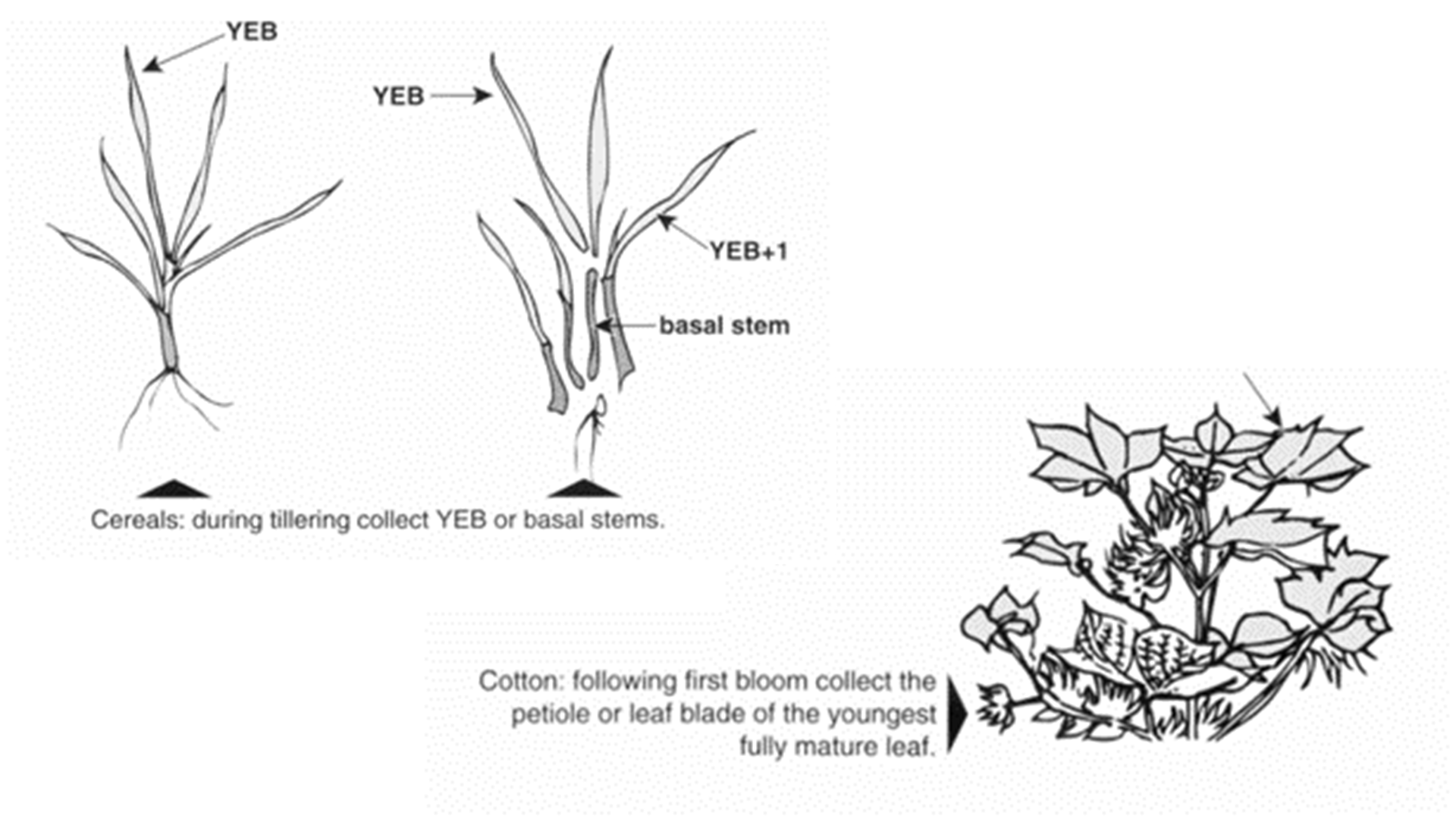Plants Testing
Why do I need plant testing?
There are three main reasons for plant analysis, these are predictive, diagnostic, and long-term monitoring and research. Nutrient imbalances are normally not known until the physical symptoms appear on the plant, with predictive plant analysis we are able to find and rectify nutrient issues before they are able to be seen in crop and cause yield reduction. With diagnostic analysis a plant that is presenting with poor growth and is visually abnormal may be tested and a nutritional overview may be given. Sometimes nutrient symptoms may be difficult to pinpoint especially if there is also insect damage or pathological infection. Plant tissue testing can give a more accurate nutritional overview. The long-term analysis is normally used in conjunction with soil testing and such parameters as yield monitoring, fertiliser input and management practices. This is normally conducted over many years and all information complied help to determine the optimum practices for peak yield.

When and how to collect plant samples for testing
Plant sampling is easy if you follow our list of Do's and Don'ts. The area where most errors occur in plant analysis is in the sampling.
When done correctly it can help you attain optimum yield more easily and ensure you aren't wasting fertiliser. Done incorrectly you can end up confused with data that you can't really use! Nutrilab always informs the sender if the plant(s) have suffered any degradation due to transportation, however we cannot distinguish if the choice of plant or environmental conditions at time of sampling are correct.
This is particularly important when Nitrate N is being tested. Nitrate N can be quickly remobilised as it is very mobile within the plant itself. If the environmental conditions are not optimum the nitrate value we detect will not be an accurate representation as to field conditions. Although nitrate N can be quickly remobilised this also means it is more sensitive and a better indication of nitrogen in the crop than total N but is also less reliable due to its greater variability.


